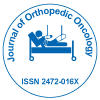Late Effects of Treatment in Ewing Sarcoma Survivors: A Comprehensive Review
Received Date: Nov 01, 2024 / Published Date: Nov 30, 2024
Abstract
Ewing sarcoma is a rare and aggressive bone and soft tissue malignancy predominantly affecting children and young adults. Advances in multimodal therapies, including chemotherapy, radiotherapy, and surgery, have significantly improved survival rates. However, these intensive treatments are associated with substantial late effects that impact long-term survivors’ physical, psychological, and social well-being. This comprehensive review explores the late effects of Ewing sarcoma treatment, focusing on cardiopulmonary toxicity, secondary malignancies, endocrine dysfunction, musculoskeletal complications, neurocognitive impairments, and psychosocial challenges. The role of genetic predispositions, cumulative treatment doses, and follow-up care in influencing these outcomes is also examined. Survivors require lifelong, multidisciplinary surveillance to identify and manage these complications proactively. Early interventions, personalized survivorship plans, and advancements in therapeutic approaches can help mitigate these late effects, ultimately improving survivors’ quality of life. Future research should focus on risk reduction, novel treatment strategies, and enhancing long-term survivorship care models.
Citation: Allures R (2024) Late Effects of Treatment in Ewing Sarcoma Survivors: A Comprehensive Review. J Orthop Oncol 10: 292. Doi: 10.4172/2472-016X.1000292
Copyright: © 2024 Allures R. This is an open-access article distributed under the terms of the Creative Commons Attribution License, which permits unrestricted use, distribution, and reproduction in any medium, provided the original author and source are credited.
Share This Article
Recommended Journals
Open Access Journals
Article Tools
Article Usage
- Total views: 121
- [From(publication date): 0-0 - Mar 10, 2025]
- Breakdown by view type
- HTML page views: 89
- PDF downloads: 32
